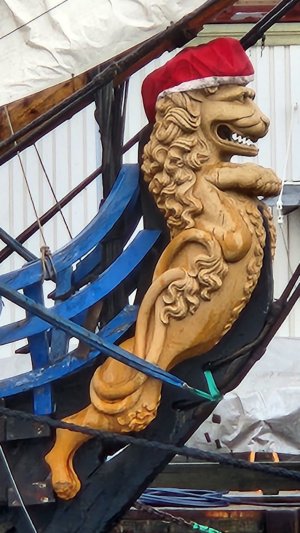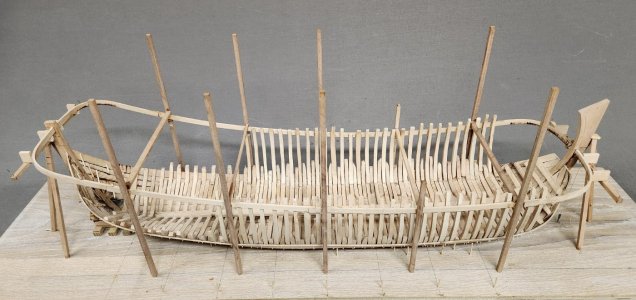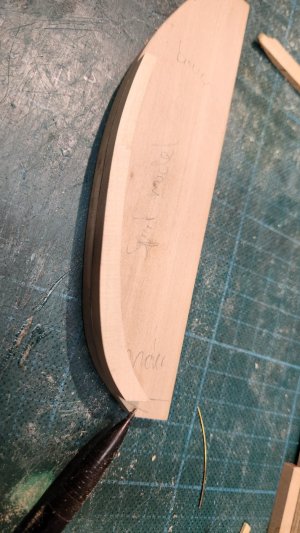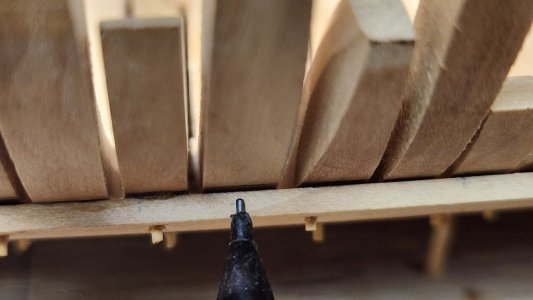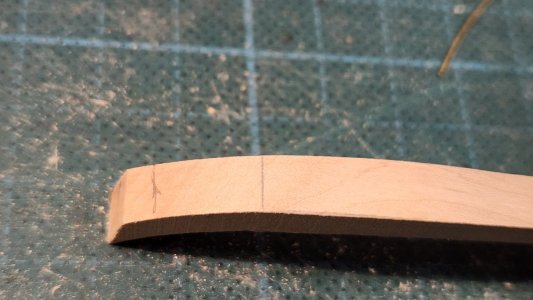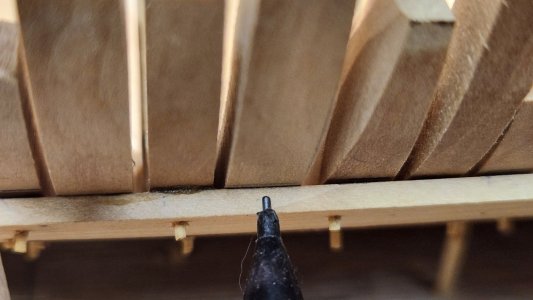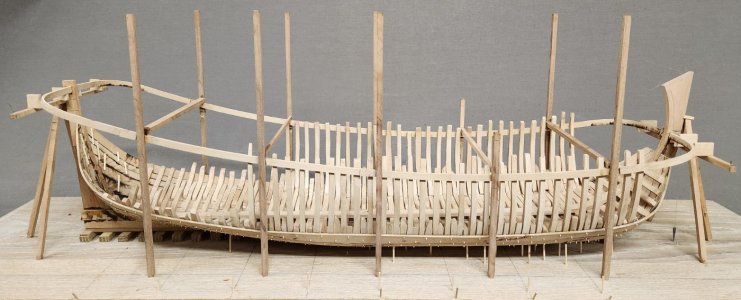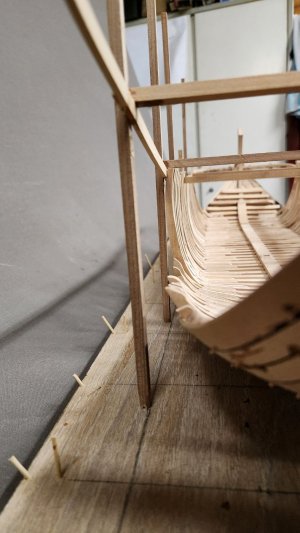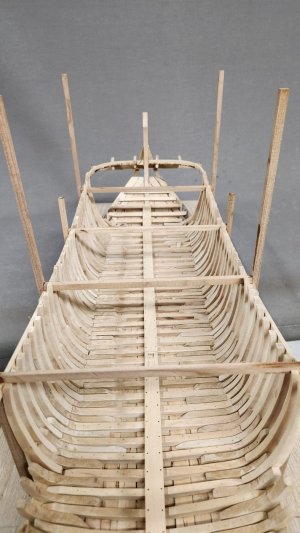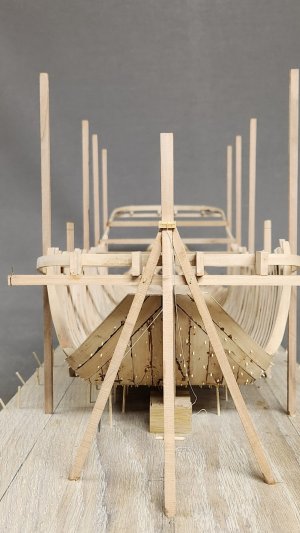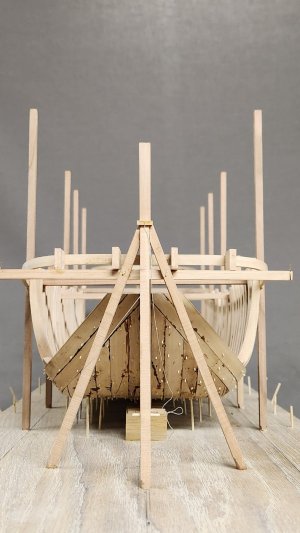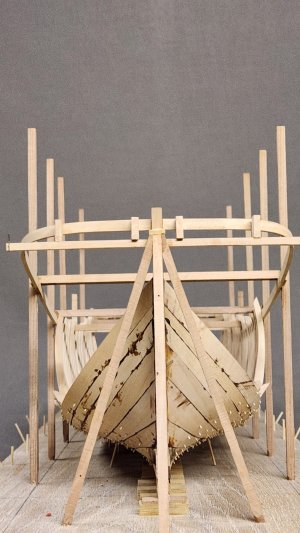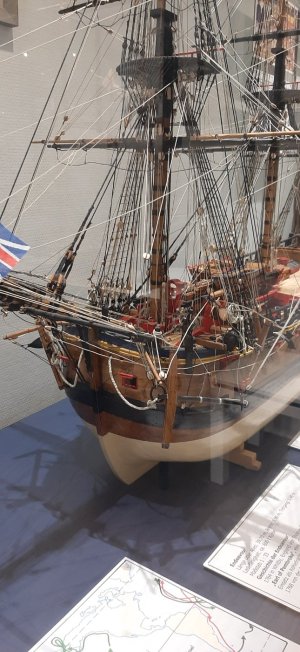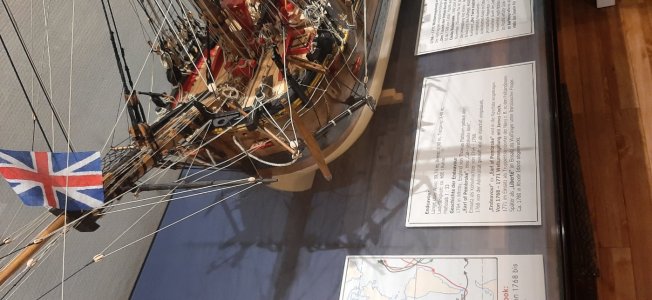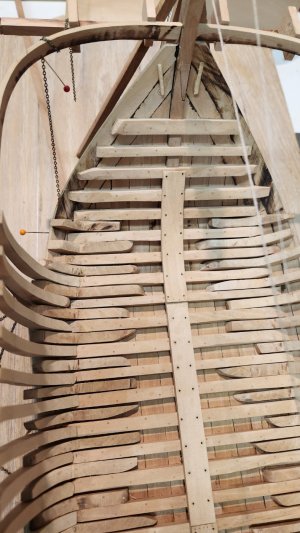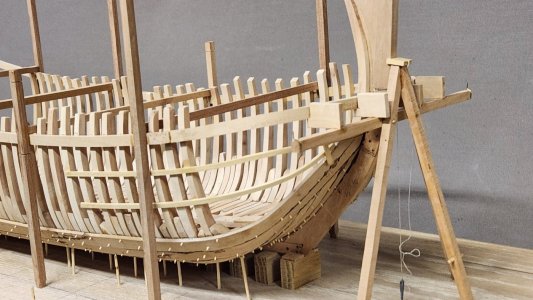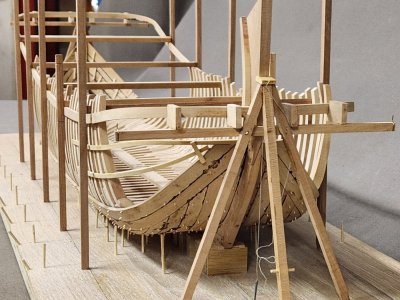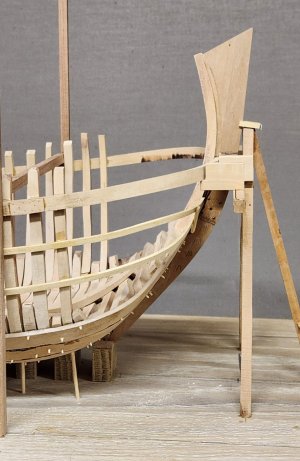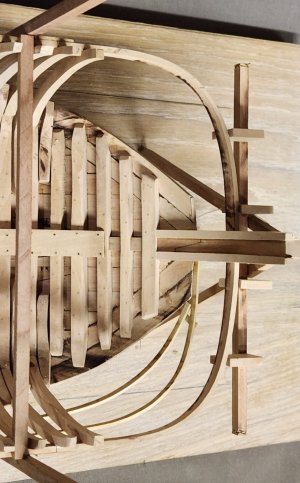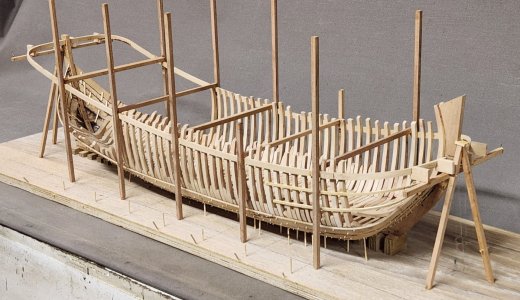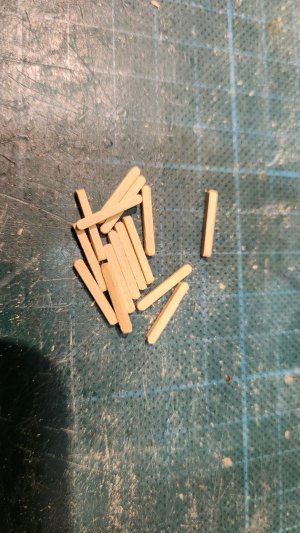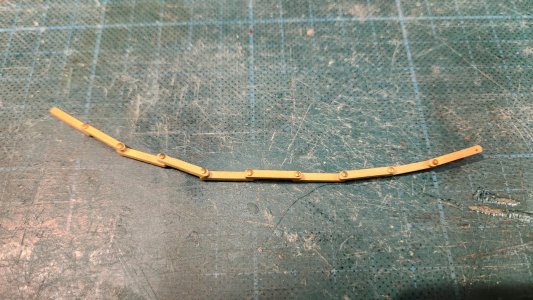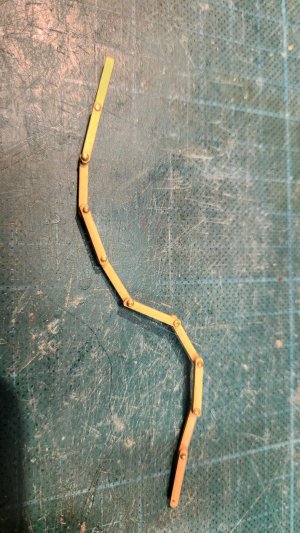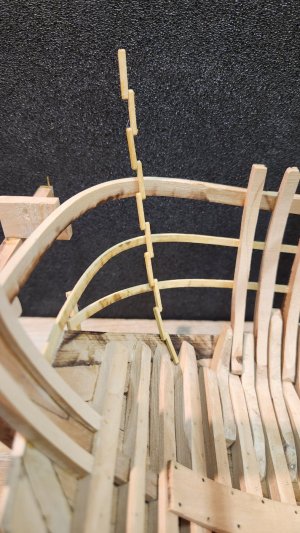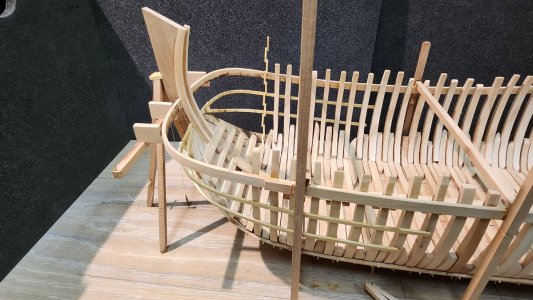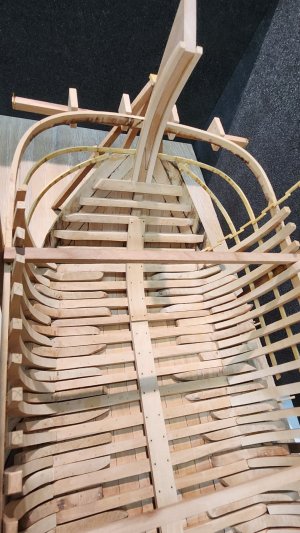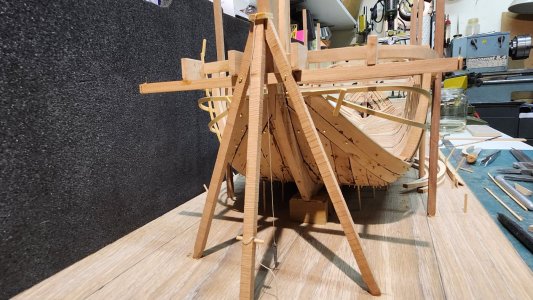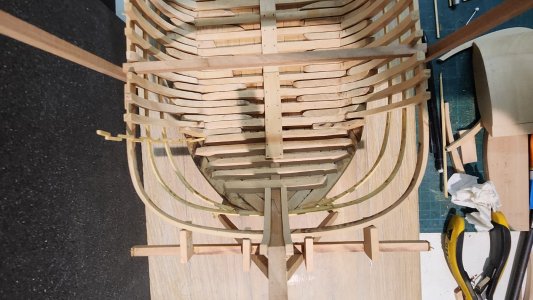Good to see you back on the shipyard, Maarten. Still full of impressions of your holiday?Finally back at work on the fluyt.
Today a start on the PS forward side fitting the first "oplangen" (second futtocks).
These oplangen will be fitted with treenails to the bilge planks and temporary fitted to the "scheerstrook" which is just a temporary mould to shape the line of greatest breadth.
View attachment 491092View attachment 491093View attachment 491094View attachment 491095
And yes again the shape and size of these oplangen are all different in width and length. The thickness of them will be made identical to fit the planking.
The hull profile of all these oplangen is identical and taken from the center frame design. Only in bow and stern of the ship this will change, but more on that later.
Step by step the shape of the Fluyt is coming alive with a nice flowing sheer.
Regards, Peter






